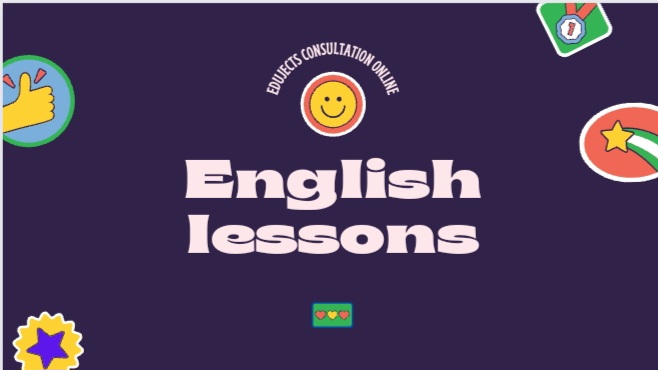SS1 English Lesson Plan and Notes- First Term
| Week: | 2 | Class: SS 1 | |
| Theme | A. ORAL:
i. Monophthong B. STRUCTURE ii. Nouns C. COMPREHENSION iii. Contextual Meaning |
||
| Date: | 15th – 20th September, 2024. | ||
| Period: | 4 | Duration: | 40 mins |
| Objectives | By the end of the lesson, students should be able to:
A. i. List and explain the functions of the organs of speech ii. Distinguish between long and vowel sounds. iii. Identify and pronounce vowel sounds in English words appropriately. B. i. Recognize nouns in sentences ii. give adequate example of all types of nouns iii. Compose different sentences using different types of nouns. C. i. Differential between contextual and literal meaning ii. Give other words to replace the words in italic in a given passage. iii. Specify the class of the words. iv. Recognize when such words are used in other contextual situations |
||
| Resources and Instructional Materials | i. J. Eyisi etal (2014) New Concept English for SS1. Learn Africa PLC, Ikeja, Lagos.
ii. K. Mebelle, etal. (2018) Goodbye to Failure in English for Senior Secondary Schools, Treasure Publishers, Mushin, Lagos. iii. Advanced Learner’s Dictionary by the Cambridge University Press (Hard copy) v. www.spellfabet.com/au vi. Use of power point slides vii. Use of videos: |
||
| Activities | List and explain the functions of organs of speech. | ||
| DAY 1 | Review of English Sounds | ||
| Previous Knowledge | The students revised vowels and consonant sounds | ||
| Introduction | Playing audio/video clips of native speakers pronouncing words, and have students repeat. | ||
| Teaching steps | Step I:The teacher introduces the class by displaying a chart on organs of speech;
Step II: Students, in small groups classify the pure vowel sounds into short and long sounds in a tabular form Step III: Students in pairs practice the vowel sounds and share with the class. Step V: Students were allowed to ask questions and proper feedback was given. Step VI: Students were guided by the teacher while carrying out their class work and marking and feedback was given immediately. Step VII: The teacher recapitulates on relevant points as he gives assignment to the students. |
||
| Content | Organs of Speech
The organs of speech are the parts of the human body involved in producing sounds used in speech. These organs work together to create the sounds necessary for language.
Organs of Speech and Functions The main organs of speech include: 1. Lungs: Provide the airflow that is essential for producing speech sounds. 2. Larynx (Voice Box): Contains the vocal cords, which vibrate to produce voiced sounds. 3. Pharynx: The cavity behind the nose and mouth that connects them to the esophagus, playing a role in resonance and articulation. 4. Oral Cavity (Mouth): Includes the tongue, teeth, hard and soft palate, and lips, all of which shape the sounds into recognizable speech. 5. Nasal Cavity: Works with the oral cavity to produce nasal sounds like “m” and “n.” 6. Tongue: A highly flexible organ that plays a crucial role in articulating different speech sounds by moving to various positions in the mouth. 7. Teeth: Help shape sounds, particularly by controlling airflow for sounds like “th.” 8. Lips: Aid in producing sounds by opening, closing, or rounding, such as in the production of “p” and “m.” The Pure Vowel The pure vowels can be divided into two groups: Five long vowels and seven short vowels. Practice Pronunciation:
|
||
| Guided Practice | 1. List and explain all the functions of organs of speech in English
2. Distinguish between long and vowel sounds. |
||
| Independent Practice | Refer to the New Concept English text book, Unit 1, page 2. | ||
| Conclusion/Summary | The teacher wraps up the class by randomly choosing students and engaging them in open-ended questioning. | ||
| Assignment | Contrast words in pairs using various sounds
. |
||
| DAY 2 | Nouns | ||
| Previous Knowledge | The students learnt pure vowels | ||
| Introduction | Explaining the concept of a noun | ||
| Teaching steps | Step I: Students as a class, identify all the identifiable concrete nouns in the class and explain the meaning.
Step II: Students in pairs, read a given passage and identify all the nouns in it (noun hunt) Step III: Students, in small group,classify nouns into concrete and abstract nouns Step IV: Students were allowed to ask questions and proper feedback was given. Step VI: Students were guided by the teacher while carrying out their class work and marking and feedback was given immediately. Step V: The teacher summarises the lesson as he gives assignment to the students. |
||
| Content | Definition of a Noun:
A noun is a naming word. It names a person, animals, place, thing, or idea. Explanation: 1. Common Nouns: General names for a person, place, or thing (e.g., “teacher,” “city,” “car”). 2. Proper Nouns: Specific names of people, places, or things; always capitalized (e.g., “Albert Einstein,” “Paris,” “Microsoft”). 3. Concrete Nouns: Nouns that can be experienced with the five senses (e.g., “apple,” “music,” “perfume”). 4. Abstract Nouns: Nouns that represent ideas, qualities, or states rather than physical objects (e.g., “happiness,” “freedom,” “love”). 5. Collective Nouns: Nouns that refer to a group of individuals or things (e.g., “team,” “flock,” “family”). 6. Countable Nouns: Nouns that can be counted (e.g., “book,” “apple,” “dog”). Different Sentences Using Different Types of Nouns Sentence with Common Noun: 1. The dog chased the ball. Sentence with Proper Noun: 2. Alice visited London last year. Sentence with Concrete Noun: 3 The cake smells delicious. Sentence with Abstract Noun: 4. She values honesty above all. Sentence with Collective Noun: 5 The flock of birds flew across the sky. Sentence with Countable Noun: 6. I bought two tickets for the movie. Sentence with Uncountable Noun: 7. There is not much water left in the bottle |
||
| Guided Practice | i. Define nouns with adequate examples
ii. give adequate examples of all types of nouns. |
||
| Independent Practice | Compose different sentences using different types of nouns. | ||
| Conclusion/Summary | The teacher wraps up the class by randomly choosing students and engaging them in open-ended questioning. | ||
| Assignment | Refer to the New Concept English text book, Unit 1, page 2. | ||
| DAY 3 | Comprehension: Contextual meaning | ||
| Previous Knowledge | The students distinguished between topic sentence and main ideas in a give context. | ||
| Introduction | Differentiating between contextual meaning and literal meaning in a passage | ||
| Teaching Steps | Step I: Students, collectively share ideas on what contextual and literal meanings mean to them.
Step II: Students, in small group, study a given passage and identify words that have contextual meanings. Step III: Students pair up to use other words to replace the identified words. Step III: Students were allowed to ask questions and proper feedback was given. Step III: Students were guided by the teacher while carrying out their class work and marking and feedback was given immediately. Step IV: The teacher emphasizes on relevant points as he gives assignment to the students. |
||
| Content | Introduction
Contextual Meaning vs. Literal Meaning Literal Meaning: The literal meaning of a word or phrase is the most basic or straightforward definition, often found in a dictionary. It reflects the exact, explicit meaning of the words as they are written, without considering any additional meanings that might be inferred from the context. Example: The phrase “raining cats and dogs” literally means that cats and dogs are falling from the sky. Contextual Meaning: The contextual meaning of a word or phrase is the meaning derived from the situation, circumstances, or surrounding text in which it is used. Contextual meaning takes into account the figurative, implied, or nuanced meaning that goes beyond the literal definition.
Refer to Unit 2, page 17 (New Concept English). Read the passage and answer the questions below: Comprehension questions
a) What action generated the controversy in this passage?
b) Why was the action necessary?
c) Was everyone in support of the action? Justify your answer.
D) What is referred to as a dangerous trend in the passage? e) Why did James say that the government was wrong? f) ‘Officials of the Lagos State Environmental Task Force and Special Offences Unit…’ i) What is the grammatical name given to this expression as it is used in the passage? ii) What is its function? g) For each of the following words, find another word or phrase that means the same and that can replace it as it is used in the passage. i) divergent ii) regulate iii) views iv) adequately v) courageous vi) legitimate vii) called on Reflect and discuss– page 20 |
||
| Guided Practice | Distinguish between the main ideas and supporting ideas | ||
| Independent Practice | What word classes do the following words belong?
divergent ii) regulate iii) views iv) adequately v) courageous vi) legitimate vii) called on |
||
| Conclusion/Summary | The teacher concludes the lesson as he vividly gives the overview of narrative essay writing. | ||
| Assignment | Refer to page 20 (New Oxford English For SS1), answer the summary questions | ||
| Evaluation | 1. In a tabular form, distinguish between long and short vowels. Give adequate examples.
2. Refer to exercise 1, page 8, New Concept English, answer the questions. 3. DRAWING CONCLUSIONS: Read the comprehension passage on page 5 again, indicate whether the given sentences are true (T) or false (F). 4. Develop a well wrtten essay on “My Family” |
||

